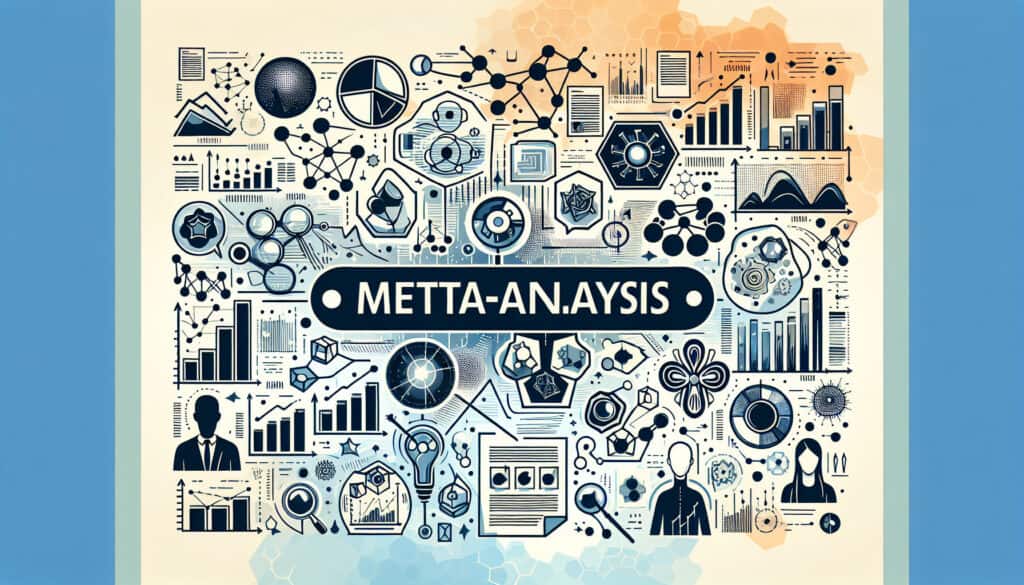To statistically combine the results of multiple scientific studies.
- Methodologies: Customers & Marketing, Economics, Human Resources, Project Management
Meta-Analysis

Meta-Analysis
- Continuous Improvement, Process Improvement, Quality Assurance, Quality Control, Quality Management, Research and Development, Statistical Analysis, Statistical Tests
Objective:
How it’s used:
- A statistical procedure for combining data from multiple studies. When the treatment effect (or effect size) is consistent from one study to the next, meta-analysis can be used to identify this common effect.
Pros
- Increases the statistical power and precision of the results; Can resolve conflicts between studies.
Cons
- The results can be biased if the studies included in the meta-analysis are not representative; The quality of the meta-analysis depends on the quality of the individual studies.
Categories:
- Engineering, Problem Solving
Best for:
- Synthesizing the results of multiple clinical trials or engineering experiments to obtain a more precise estimate of the treatment effect.
Meta-analysis serves as a powerful tool in various domains such as healthcare, product design, and engineering by synthesizing results from diverse studies or experiments. In clinical trials, meta-analysis enables researchers to evaluate the effectiveness of new medications or interventions by aggregating data across multiple trials, which is particularly useful when individual studies yield conflicting results or have small sample sizes. This methodology is widely utilized in industries such as pharmaceuticals, biotechnology, and medical device development, where decision-making relies heavily on evidence-based outcomes. In the context of engineering, meta-analysis can be employed to assess the effectiveness of different materials or design strategies by analyzing data from various experimental setups, identifying common performance metrics and enhancing the reliability of findings. The initiation of a meta-analysis typically involves collaboration among researchers, statisticians, and domain experts who define the parameters of interest and criteria for study inclusion. Key participants in these analyses not only include those conducting the studies but also stakeholders such as regulatory bodies or funding agencies, who utilize the synthesized information to influence policy and investment decisions. The ability to increase statistical power and resolve inconsistencies across studies enables companies to make well-informed choices, improve product design processes, and ultimately advance innovation in their respective fields.
Key steps of this methodology
- Define the research question and inclusion criteria for studies to be analyzed.
- Select studies that meet the established inclusion criteria.
- Extract relevant data from each study, including effect sizes and sample sizes.
- Assess the quality and bias of the included studies.
- Calculate the effect size for each study using a statistical model.
- Use statistical methods to combine the effect sizes into a pooled estimate.
- Evaluate heterogeneity among study results using appropriate statistical tests.
- Conduct sensitivity analyses to assess the robustness of the results.
- Perform subgroup analyses if necessary to explore potential sources of variation.
- Interpret the results in the context of the research question and provide recommendations.
Pro Tips
- Conduct a thorough sensitivity analysis to identify how variations in study quality and methodology influence overall effect size.
- Employ advanced Bayesian approaches to incorporate prior information and update effect size estimates, offering more nuanced insights.
- Use meta-regression techniques to explore potential effect modifiers, allowing deeper understanding of heterogeneous results across studies.
To read and compare several methodologies, we recommend the
> Extensive Methodologies Repository <
together with the 400+ other methodologies.
Your comments on this methodology or additional info are welcome on the comment section below ↓ , so as any engineering-related ideas or links.
Historical Context
1999-05-01
2000
2002
2013
1998
2000
2000
2003
2013-09-24
(if date is unknown or not relevant, e.g. "fluid mechanics", a rounded estimation of its notable emergence is provided)









Related Posts
METS to Calories Calculator
Message Mapping
Mental Model Diagrams
Maximum Acceptable Pushing and Pulling Forces
Material Requirements Planning (MRP)
Master Production Schedule (MPS)